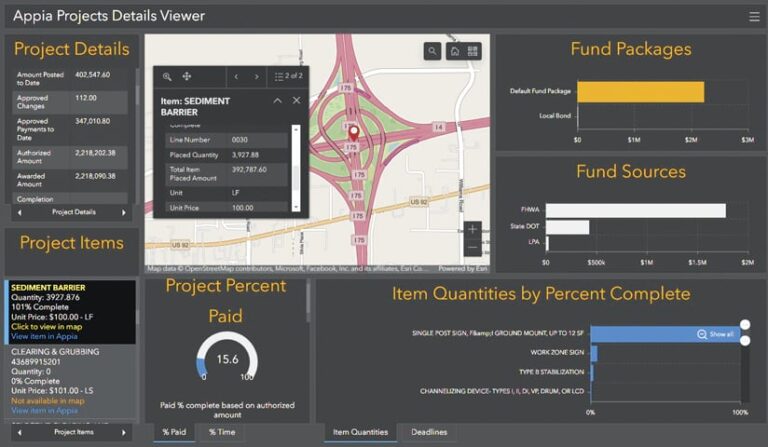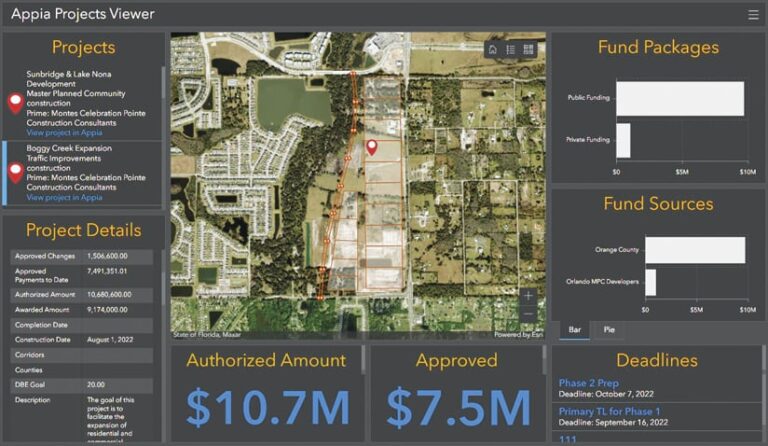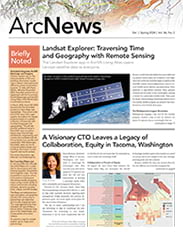Thousands of projects across the United States have been funded through the Infrastructure Investment and Jobs Act (IIJA) since it was signed into law in 2021. These projects include replacing the Baltimore & Potomac Tunnel in Maryland, retrofitting the Golden Gate Bridge in California, and constructing a multimodal transportation center in Lincoln, Nebraska.
As part of the bidding process for IIJA projects, state and local government agencies are tasked with incorporating construction contract activities into their maps and dashboards, such as bid item data and funding.
However, construction contract data cannot be directly processed with ArcGIS products. Esri partner Infotech offers an integrated solution with its Appia software, which integrates ArcGIS Online and ArcGIS Enterprise functionality for construction contract and compliance management. The company works with state, local, and private entities to streamline construction project processes including funding management, secure online bidding, and inspection solutions.

“The IIJA is a once-in-a-generation funding for infrastructure with a specific call for advanced digital construction management systems,” said Infotech chief revenue officer Chad Schafer. “This will allow the industry to progress towards a complete digital project delivery methodology to further automate manual processes. In addition, it will facilitate both collaboration and data workflows across an agency’s different business sectors.”
After a connection has been established between Appia and a user’s ArcGIS account, a feature service is created with the Appia project data that can then be visualized with Esri tools and shared internally or externally with the public.
“We wanted to seamlessly incorporate construction contract data into a GIS to add georeferencing and visualization capabilities, such as maps and dashboards, into the workflow for the Appia service,” said Schafer. He added, “It’s important to allow easy access to that enhanced data throughout the entire organization. The exchange of data across the different business areas is essential to support digital project delivery and provide the level of transparency and accountability required for IIJA contracts.”
The integration allows the Appia service to use ArcGIS functionality such as analytics, dashboard displays, and mapping services. The enhanced workflow provides construction progress data that can be georeferenced. Capabilities include visualizing where funding is allocated and the amount of remaining funds, in an easy-to-understand and shareable manner that addresses various IIJA requirements. The Appia data integration with ArcGIS presents Appia’s near real-time construction data in a dashboard created with ArcGIS Dashboards, showing project details in a state or specified municipality.

Infotech also launched an integrated workflow with ArcGIS Field Maps in 2023 by connecting Appia to Field Maps using Seiler Geospatial’s GeoBridge solution. This integration enhances field inspection processes and ties the item/asset data to geolocation for better digital project delivery.
“Combining Infotech developed systems’ data with the analytical and visualization capabilities of ArcGIS provides our clients with new levels of near real-time data analytics,” Schafer said. “It also allows unique insights into the way infrastructure funds are being distributed and managed across the many projects that are underway throughout the United States.”

